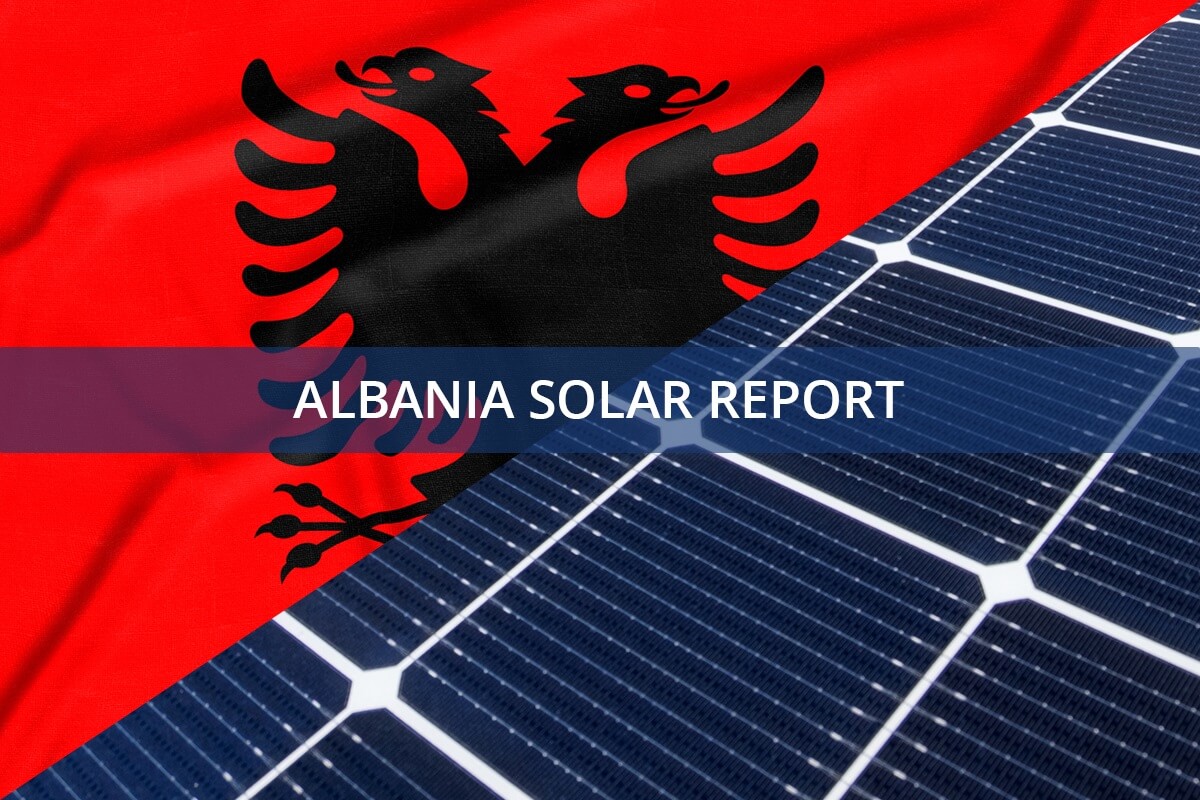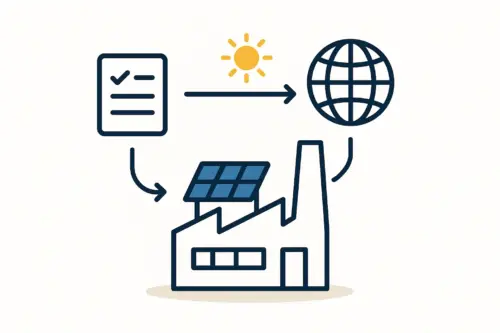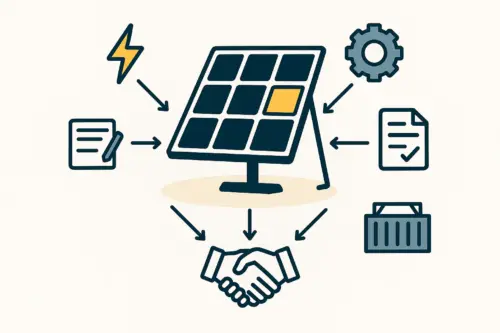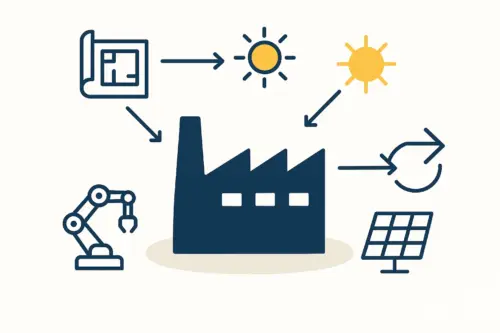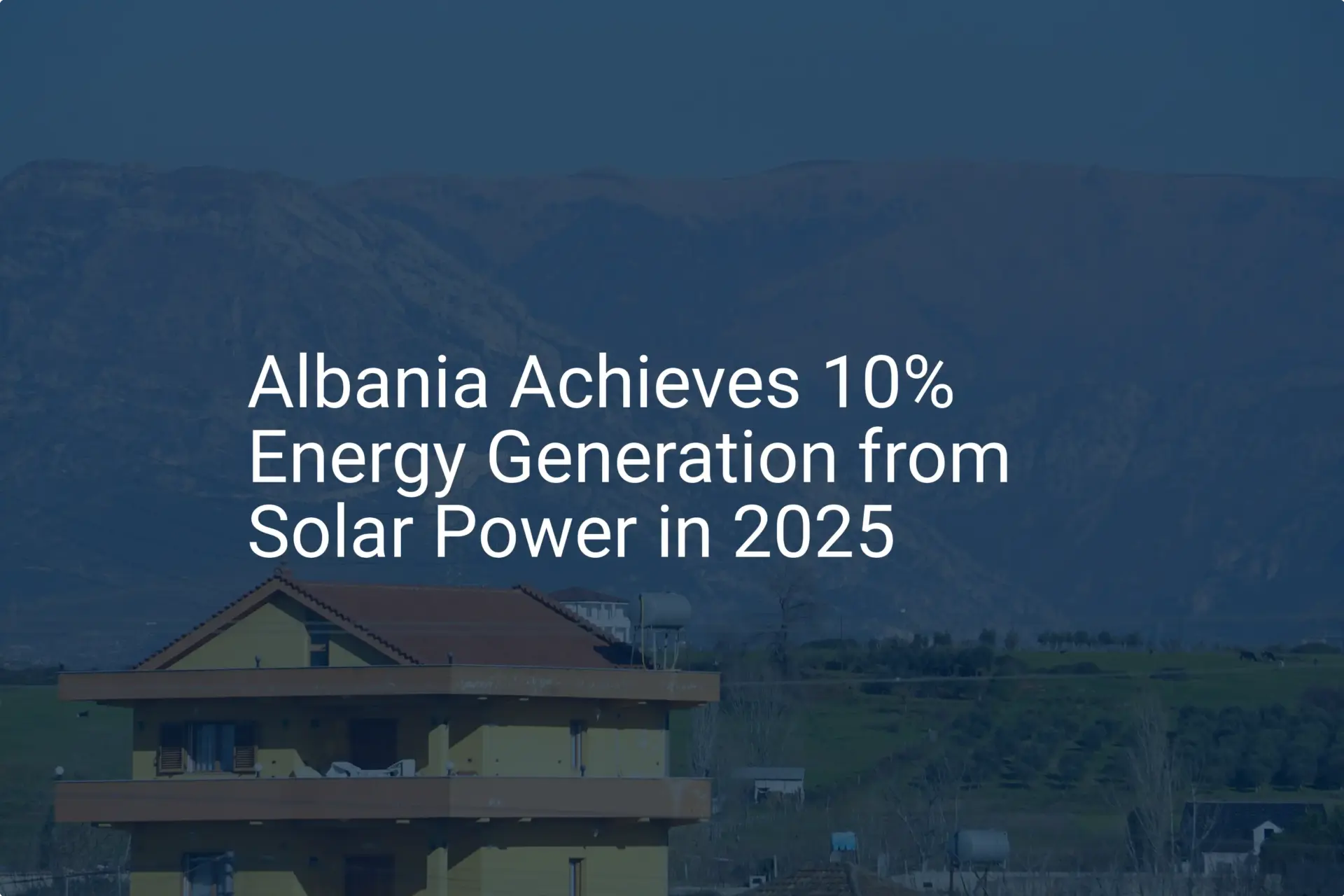Albania is at a truly exciting point, folks. It’s blessed with heaps of sunshine and a real, growing drive to diversify its energy mix. For a long time, hydropower has been the nation’s workhorse, but there’s a clear, strategic shift happening towards solar energy. This is opening up some fresh and genuinely promising avenues for investors and entrepreneurs – just like you. As the country gears up for some pretty significant growth in solar capacity, the idea of setting up local solar module production lines? Well, it’s looking more and more attractive. But, as with any big venture, success here really boils down to getting a solid feel for Albania’s labor landscape and figuring out how to build strong local supply chains.
So, if you’re mulling over the idea of setting up solar manufacturing in Albania, what do you really need to know? Let’s dive into these crucial operational factors, drawing on what industry reports and market assessments are telling us. We’ll explore what it truly takes to build a thriving solar factory in this promising Balkan nation, hopefully helping you get a much clearer picture.
Table of Contents
The Albanian Labor Force: Who Will Power Your Solar Production?
Any successful manufacturing plant, as I’m sure you know, leans heavily on a skilled and adaptable workforce. When we start talking about solar PV production in Albania, several key things about the labor market really stand out:
Workforce Availability and Demographics: Finding Your Team
Here’s some good news to start with: Albania’s labor pool does include unskilled and semi-skilled workers who are generally well-suited for assembly lines and the kind of factory operations we’re talking about. However, for solar manufacturing, the big question often circles back to the availability of specialized skilled labor – we’re talking about engineers, technicians, and seasoned manufacturing professionals. Reports, including some really valuable ones from the European Training Foundation (ETF), tell us that while a general workforce is on hand, building up those specific skills for the renewable energy sector, especially in solar PV technology, is definitely a work in progress. Things like unemployment rates and labor participation figures give us the broader economic backdrop, but if you’re investing in solar, your laser focus will naturally be on these niche skill sets.
Wage Structures and Labor Costs: What to Expect
Albania often catches the eye because of its competitive labor costs, especially when you stack them up against many Western European countries. The average monthly salary across different sectors can give you a baseline, but wages in manufacturing, particularly for those skilled technical roles you’ll need, will warrant a closer look. Getting a firm handle on minimum wage laws, typical benefits, and social security contributions is absolutely vital – not just for accurate financial planning, but just as importantly, for ensuring you’re fostering fair labor practices. To give you a bit of a snapshot, data pulled together from various sources showed the average gross monthly wage in Albania hovering around ALL 70,469 (that’s roughly €670-€700) in late 2023. Keep in mind, though, this can swing quite a bit depending on the sector and the skill level involved.
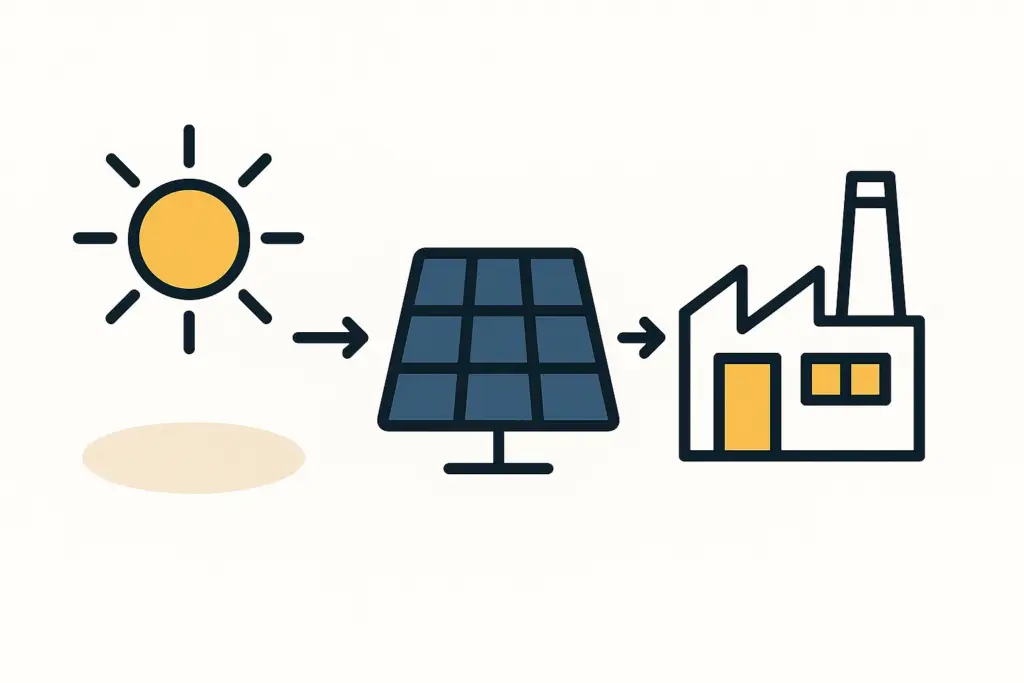
Education, Skills, and Training: Building Expertise
A skilled workforce doesn’t just appear out of thin air; it’s deeply connected to the nation’s education and training setup. Albania has vocational schools and universities offering programs in engineering and technical fields, which is a great starting point. The challenge – and honestly, the opportunity – lies in aligning these programs much more closely with the specific needs of the solar manufacturing industry. The ETF has pointed out just how crucial enhanced vocational training and tighter teamwork between educational institutions and industry are for bridging any potential skill gaps. Initiatives to upskill and reskill the existing workforce, perhaps through smart public-private partnerships, will be absolutely key for the long-term health of solar manufacturing here. And, of course, on-the-job training will play a massive role, especially as new factories get up and running.
Labor Regulations and Environment: Navigating the Rules
Getting your head around local labor laws is just fundamental when you’re setting up shop anywhere, and Albania is no exception. This means getting familiar with regulations on things like employment contracts, working hours, employee rights, health and safety standards, and the procedures for work permits if you’re thinking of bringing in expatriate expertise. At the end of the day, a stable and predictable labor environment is what truly encourages investment, so this is an area really worth your attention.
Want to learn more or need expert help? Visit our free e-course or explore our services. Or, if you’re ready to dive deeper, our Premium Business Plan E-Course offers personalized guidance to get your venture off the ground. Let’s make your solar journey smooth and successful.
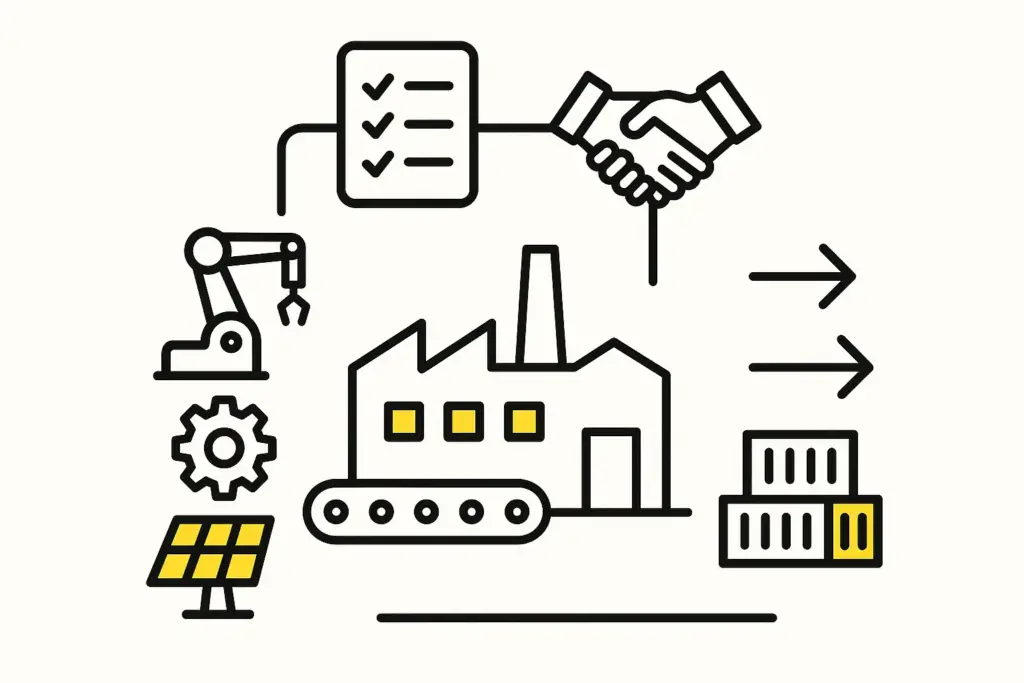
Developing the Supply Chain for Solar Modules in Albania: Getting Your Materials
While your team is critical, efficient solar module production also hangs on a steady, reliable supply of raw materials and components.
Raw Materials and Component Sourcing: Where Will It All Come From?
Solar module manufacturing relies on a pretty specific shopping list: think silicon wafers, solar glass, aluminum frames, encapsulants (like EVA), and backsheets. Now, currently, Albania has limited domestic production of these specialized items specifically for the solar industry. What this means in practice is that manufacturers will most likely need to rely on imports for most, if not all, of these critical inputs. Building strong relationships with international suppliers and thoroughly understanding the ins and outs of import logistics will be high on your to-do list. It’s encouraging, though, that the International Renewable Energy Agency (IRENA) has noted Albania’s efforts in developing its renewable sector, which naturally includes tackling these kinds of supply chain logistics.
Ready to make big Profits?
The solar Industry is Booming
WE HELP NEWCOMERS to the solar industry start their own solar module production line. Customers can make BIG PROFITS by selling modules and finding investors, without wasting money and time on things they don't need!
Local Manufacturing Potential: Can Some Parts Be Made In-Country?
While producing high-tech components like solar cells locally might be more of a longer-term goal, there’s definitely potential to develop local capacity for other parts. Think about Albania’s existing industries – they’ve got metal fabrication (which sounds pretty perfect for aluminum frames, right?), plastics, and potentially some basic electronics assembly. Could these be tapped as suppliers for less complex components like junction boxes or frames? Encouraging local businesses to adapt and meet the quality standards required by the solar industry could, bit by bit, reduce reliance on imports for certain items. The fact that TÜV Rheinland is present in Albania, offering PV supply chain services, is a positive sign – it points to a growing ecosystem ready to support quality and standards.
Infrastructure and Logistics: Moving Goods Efficiently
Smooth logistics are, frankly, non-negotiable. This means taking a good, hard look at the quality and capacity of Albania’s transportation infrastructure – its ports (like Durrës, which is key), road networks, and rail connections – for handling both your imported raw materials and potentially for exporting finished modules. And don’t forget about suitable industrial zones with reliable utilities (electricity, water); these are also a crucial piece of the puzzle when you’re choosing a factory location. Large-scale energy projects, like the KESH Belshi Solar PV Project detailed in European Bank for Reconstruction and Development (EBRD) documents, often give you some good clues about relevant logistical and infrastructure considerations in the region.
Government Policies and Incentives for Local Supply Chains: What Support is Available?
The Albanian government is clearly committed to increasing solar energy production – you can see this in various national strategies and project approvals. This commitment could well extend to supporting the development of local manufacturing and supply chains. It’s definitely worth investigating what kind of incentives might be available, such as favorable tax regimes for manufacturing, customs duty exemptions for raw materials, or support for setting up operations in designated economic zones. These could offer some significant benefits! IRENA’s Renewable Readiness Assessment for Albania is often a good place to start digging for details on policy landscapes that could influence local manufacturing.
Key Operational Insights for Factory Planning: Putting It All Together
So, considering all these labor and supply chain dynamics, what are the key takeaways if you’re seriously planning a solar manufacturing facility in Albania? Let’s break it down:
- Strengths to Leverage: You’re looking at potentially competitive labor costs, which is a big plus. Add to that a government genuinely keen on expanding solar energy, and Albania’s strategic location in the Balkans. These are strong foundations!
- Weaknesses/Challenges to Address: You’ll need to be prepared for a current skills gap in highly specialized solar manufacturing roles. Also, plan for a likely heavy reliance on imported raw materials and components, as the local supply chain for specific solar parts is still in its early days.
- Opportunities to Seize: There’s real potential here to develop a skilled workforce through targeted training programs – a chance to build from the ground up. You could also foster local suppliers for certain components over time, building a more resilient local ecosystem. And, of course, there’s the fantastic opportunity to serve both the growing domestic market and potentially regional ones too.
- Threats to Mitigate: It’s always wise to keep an eye on global supply chain disruptions, which can affect material costs and availability. Competition from established global manufacturers is a reality, and it will naturally take time and investment to develop local expertise and robust supply networks.
When it comes to the bottom line, your main cost drivers will likely be those imported materials, labor wages and the crucial training involved, energy for production (it’s a factory, after all!), and all the logistics involved in both getting materials in and shipping finished products out.
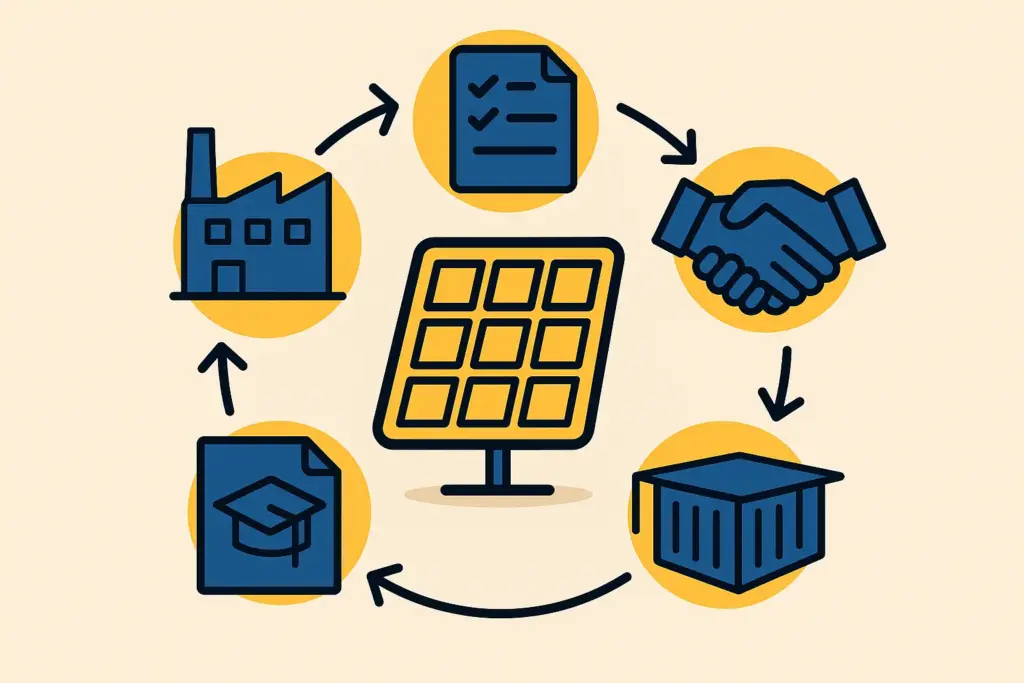
Building Albania’s Solar Manufacturing Future: A Bright Outlook
Honestly, Albania’s move into solar module manufacturing holds some really exciting potential, and it’s strongly supported by its abundant solar resources and clear strategic energy goals. Yes, there are challenges, particularly in workforce skills development and getting the supply chain up to full speed, but these are far from insurmountable hurdles. With a proactive approach – and by that, I mean thorough due diligence, forging smart partnerships for training and sourcing, and staying aligned with government initiatives – you can truly pave the way for successful solar production ventures.
These operational insights into labor and supply chains are crucial first steps on your journey. Ready to turn potential into profit? We at PVknowhow.com are dedicated to your success in Albania’s solar sector. Our comprehensive ‘Solar Manufacturing Opportunities in Albania: A PVknowhow.com Report‘ is your expert guide through every stage of planning and launching your solar factory. Let’s build Albania’s solar future together!
Frequently Asked Questions (FAQs)
Q1: So, what’s the general ballpark for labor costs if I’m manufacturing in Albania?
A: That’s a great question! While exact figures will always vary by the specific skills you need and the sector, Albania generally offers a competitive edge on labor costs compared to many Western European nations. As of late 2023, the average gross monthly wage was around €670-€700. But, you’ll definitely want to do a detailed analysis specifically for the manufacturing roles you’re looking to fill.
Q2: Will I easily find skilled technicians for solar panel production in Albania?
A: There’s a general technical workforce available, which is a good starting point. However, for those highly specialized skills unique to solar PV manufacturing, you might find that some targeted training and development initiatives are needed. The good news, as bodies like the ETF have noted, is that efforts are underway to upskill the labor force specifically for the renewable energy sector. So, it’s an evolving picture, and one with positive momentum.
Q3: What about sourcing solar panel components locally in Albania? Is that an option?
A: Right now, for most specialized solar components (like solar cells, specialty glass, and encapsulants), you’d likely need to plan for imports. However, there’s certainly potential – and it’s an exciting one – to develop local sourcing over time for items like aluminum frames or junction boxes. This could happen by working with existing manufacturing industries in Albania and helping them adapt.
Q4: How is the Albanian government actually supporting solar manufacturing?
A: The Albanian government is actively promoting solar energy, which is fantastic news for potential manufacturers like yourself. This support can come in various forms – think favorable policies for renewable energy projects, potential investment incentives, and general measures to improve the ease of doing business. It’s definitely worth digging into specific incentives for manufacturing. Reports from organizations like IRENA can often offer some good context on this.
Q5: What are the biggest logistical hurdles I might face setting up a solar factory in Albania?
A: Good question – planning for logistics is key! Some potential challenges to think about include managing the import of raw materials and components efficiently (think customs, shipping times), ensuring smooth internal transport and warehousing once they’re in-country, and then developing robust outbound logistics for your finished products. The quality of existing infrastructure, particularly port facilities like Durrës and the road networks (sometimes you can find useful insights in EBRD project details for similar large-scale ventures), will be a key factor to consider in your planning.
References
All references
- European Training Foundation (ETF). (2022). Future skills needs in the Albanian energy sector. Retrieved from https://www.etf.europa.eu/sites/default/files/2022-01/fow_albania_energy_sector_final_en.pdf
- International Renewable Energy Agency (IRENA). (2021). Renewables Readiness Assessment: Albania. Retrieved from https://www.irena.org/-/media/Files/IRENA/Agency/Publication/2021/March/IRENA_RRA_Albania_2021.pdf
- PVknowhow.com. Solar Report: Albania. Retrieved from https://www.pvknowhow.com/solar-report/albania/
- European Bank for Reconstruction and Development (EBRD). KESH Belshi Solar PV Project (redacted). Retrieved from https://www.ebrd.com/content/dam/ebrd_dxp/documents/project/54350/KESH%20Belshi%20Solar%20PV%20Project%20(redacted)_final.pdf
- TÜV Rheinland. PV Supply Chain Services Albania. Retrieved from https://www.tuv.com/albania/en/pv-supply-chain-services.html
- ResearchGate. The Role of Solar Energy in Albania’s Economic Transformation. (General background). Retrieved from https://www.researchgate.net/publication/390365888_The_Role_of_Solar_Energy_in_Albania’s_Economic_Transformation

